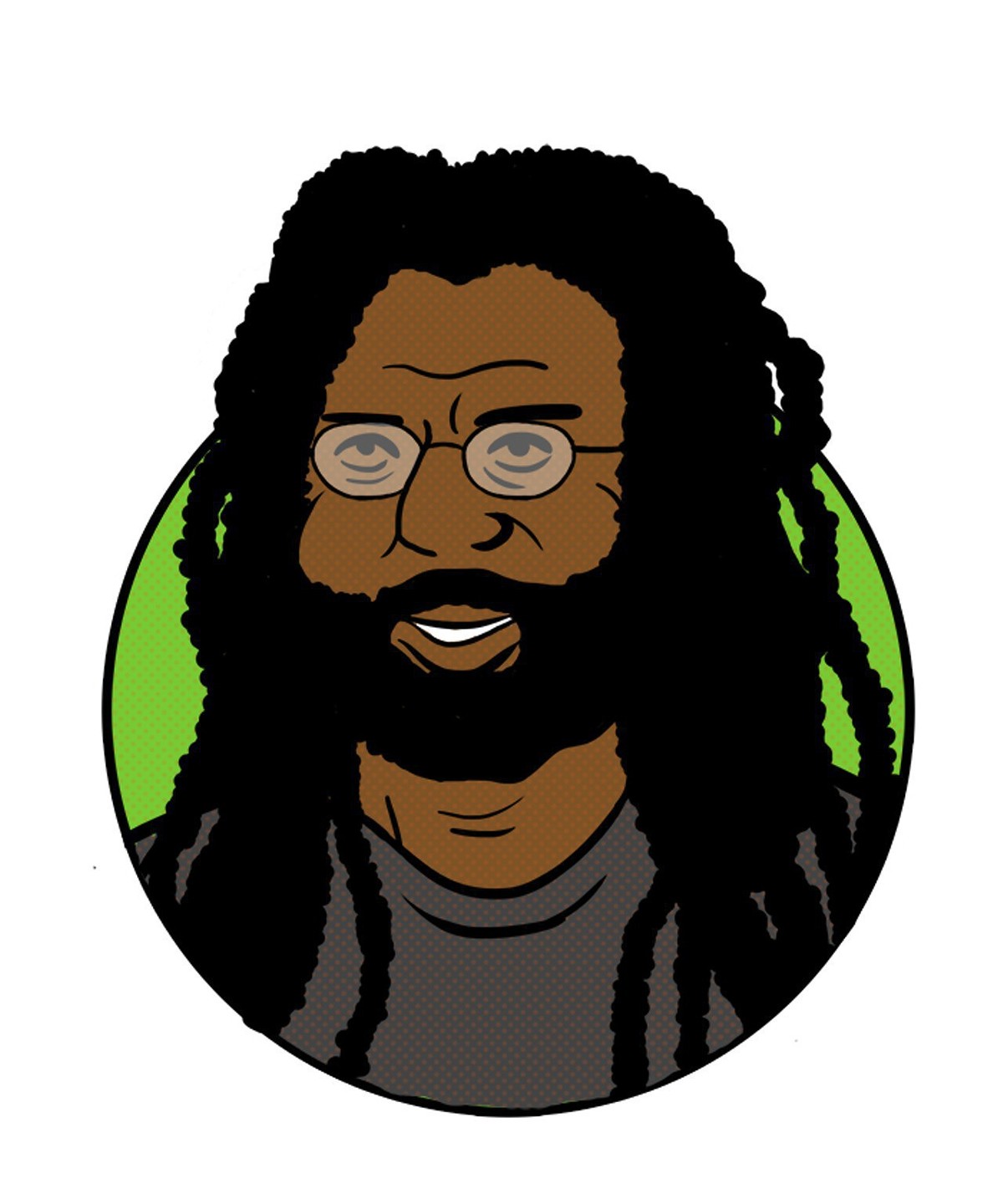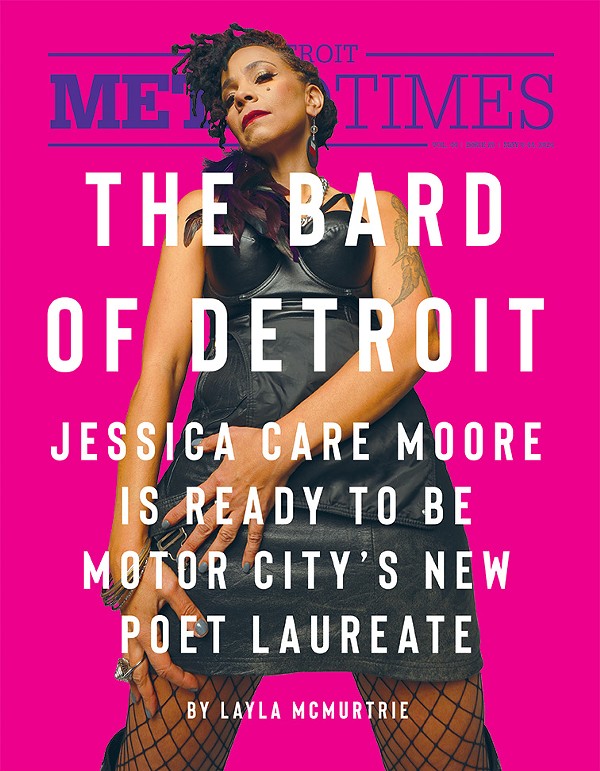Blair Anderson was going out late last week when his wife called him back in.
"You be careful," she told him.
It was no idle caution in the aftermath of the Alton Sterling killing in Baton Rouge, La., the Philando Castile killing in Falcon Heights, Minn., and the killing of five police officers in Dallas. Anxiety was heightened across the country as coverage of the tragedies dominated news stations 24 hours a day.
Anderson has seen these kinds of events play out before. He was a Black Panther during the black empowerment group's most active days, and in 1969 was in a Chicago apartment when police stormed it and killed the charismatic, up-and-coming leader Fred Hampton.
"They shot me several times with a machine gun," Anderson says. "I was wounded and surrendered."
Although Anderson suffered a major loss of blood, none of the gunshots hit a major organ, so he survived. The 21-year-old Hampton was shot point blank in the head.
The prospect of being shot by police is very real to Anderson, who spent some 26 years in prison for robberies he committed. One of them involved robbing a gun store when Black Panthers decided it was time to shoot it out with drug dealers in the black community.
Guns are central to what's occurring in the country now. The police in Baton Rouge had guns and killed Sterling within moments of one of them yelling, "He's (Sterling) got a gun," even though Sterling was on the ground with two officers atop him, and the gun was apparently in his pocket. As many as six bullets, shot from inches away, hit him. Videos taken by bystanders don't clearly show Sterling's right hand, although a security video from the nearby convenience store might show where that hand was. The security video was confiscated by police. Presumably the U.S. Justice Department, which is investigating the killing, has custody of the video now.
In Minnesota, Castile, whose car was pulled over for a broken tail light, had a gun that he was licensed to carry. Castile's girlfriend Diamond Reynolds, who was in the car along with her 4-year-old daughter, says that the police officer asked for identification. As Castile reached toward his back pocket to get his wallet, he told the officer that he had a gun. The officer immediately emptied five rounds into him. Reynolds somehow had the presence of mind to live stream a video of Castile as he was fading away and the officer stood outside the car with his gun pointed toward him as he bled out. Castile was later pronounced dead at a hospital.
The two black men were killed by white police because they had guns. Yet just a few weeks ago, after the shooting at the Pulse nightclub in Orlando, Fla., the U.S. Senate voted down the "no fly, no buy" law that would have stopped suspected terrorists from buying a gun. Congress refused to even bring those bills to a vote — touching off the sit-in by congressional Democrats.
The right to own a gun is so sacred in our country that any attempt to curb it — even for suspected terrorists — goes nowhere. Yet at the same time, two African-Americans are executed on the spot for having a gun. Something's got to give here. If you have a constitutional right to carry a gun, then you shouldn't get summarily killed for exercising that right. Or is that only for white people?
In May 2014, Joseph Houseman, a white open-carry advocate, brandished a rifle in front of a Kalamazoo Dairy Queen. He yelled aggressive and confrontational statements at police during a 40-minute standoff that ended peacefully.
"I don't want to shoot you," a police officer told Houseman. "I'm not here to do that."
There is some sense of understanding in Castile's case. The day after his killing, Minnesota Gov. Mark Dayton said he believes Castile would still be alive if he were white. The governor asked the Justice Department to take over the investigation. Department officials declined, but they are monitoring the state investigation.
The Sterling and Castile shootings were almost eclipsed by the carnage in Dallas. Police guarding a peaceful protest of the Baton Rouge killing were ambushed and shot by Micah Johnson, a black Army veteran who was upset about Sterling's killing. The sniper shot 12 officers, and five of them died.
The Dallas killings stood out to most of us — even in the wake of tragedies with higher body counts in Orlando, Paris, Istanbul, and elsewhere — because police officers were targeted. Johnson waited in ambush, and later told police that he wanted to kill white people. His actions were almost universally condemned.
Even so, Johnson's motivations are worthy of some examination and contemplation rather than just dismissing him as a disturbed individual, the usual diagnosis for mass killers. He had military training and was deployed to Afghanistan in 2013-2014. Anderson sees something of what he saw in black Vietnam veterans in the 1960s.
"He reminds me of the people who came to the Black Panthers straight from Vietnam," Anderson says. "He's a trained soldier and he sees black people confronted by paramilitary police and he knows what they're facing."
Anderson has had plenty of time to think through his own motivation to turn to a gun in his youth. He's been out of prison for several years and has turned his attention to progressive community efforts in Detroit. He works with urban agriculture activists, the Charlevoix Village, and the Boggs Center. He's programs coordinator at the Church of the Messiah, has started a leatherworking business that makes belts, purses, and the like, and is a principal with the Black Panther Party Detroit History and Memory Project.
He spoke about a recent voter registration event by New Era Detroit on the west side that attracted police attention because the voting activists were illegally standing out in the street. Anderson says a tactical squad was mobilized to the event and it became confrontational, but he worked to calm the situation.
"It descended into a shouting match," Anderson says. "I asked both sides to look at each other, and when they looked at each other it de-escalated. De-escalation of that was for us to look at each other and say, 'Aren't we the same, black folks?'"
Maybe it would have been different if the police were white — maybe not. The assault in Dallas took place against officers in a department that was known to be more progressive than others. The police chief there is African-American.
When one takes a look at statistics, the shooting of unarmed black men by police has not slowed down. What has changed is we are catching more of them on video. Anyone who witnessed what happened in Baton Rouge, Falcon Heights, and Dallas has to be disturbed. The question is what happens next.
This is an election year, and the way we go could be tipped by emotions of fear and anger. There is a sense of division being driven by some. Others wish to reach out in healing. Although there have been many calls for calm, and certainly revulsion from people of all kinds at ambushing police, this year people seem to be in a less forgiving mood. It's how we work through this that will show us who we are as a nation.
Once in conversation with Benny White — the artist who painted the now-destroyed mural of Malice Green, who was killed by white police in Detroit — he told me that every day he gets up and cries when he thinks about what has been done to black people in America.
Once the crying is over for these recent victims, it's time to be determined to stop the carnage on all sides. Maybe we should take Anderson's advice to look at each other and see where our similarities lie. That's the beginning of de-escalation.


